MVMNT Cafe by Morag Myerscough
Designer Morag Myerscough used the tweets of a poet to create the bold graphics surrounding this temporary cafe in London.
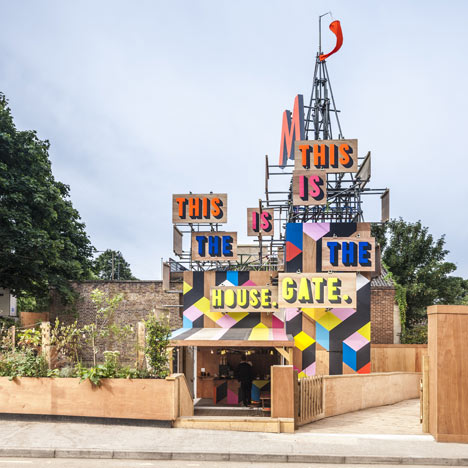
Located close to the Olympic Park in Greenwich, the cafe was commissioned by developer Cathedral and constructed in just 16 days to coincide with the start of the games.
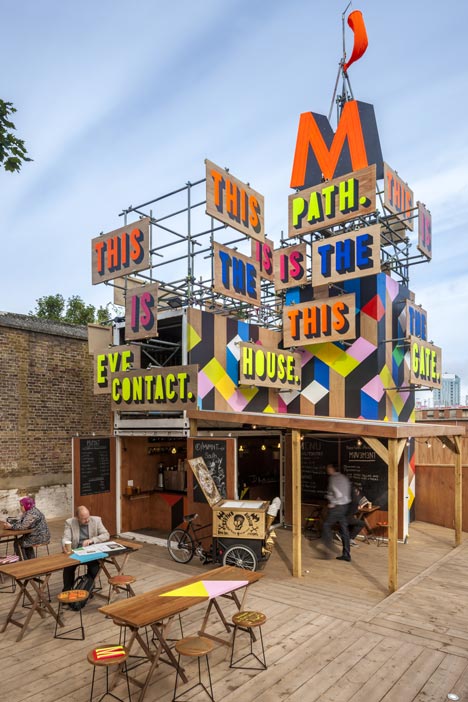
The brightly painted words on the facade spell out phrases such as 'this is the gate' and 'this is eye contact', which originate from one of many creatively written tweets by poet Lemn Sissay.
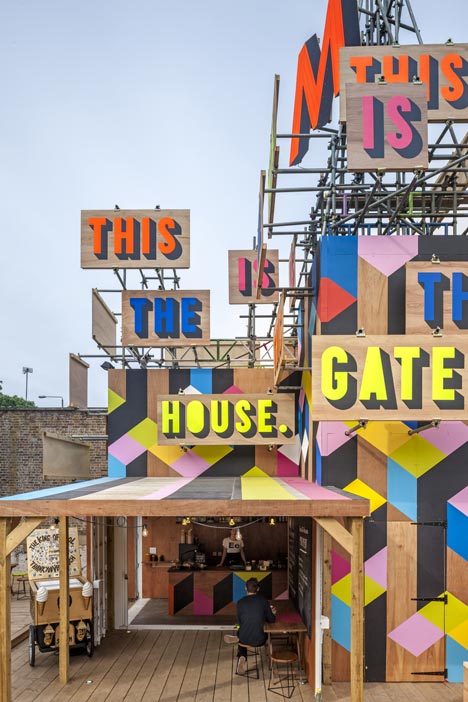
"I had worked with Lemn Sissay on a previous project and wanted to collaborate with him on this project," Myerscough told Dezeen. "So we met up, and he mentioned these tweets he does everyday and I liked the idea of somehow incorporating them into this project."
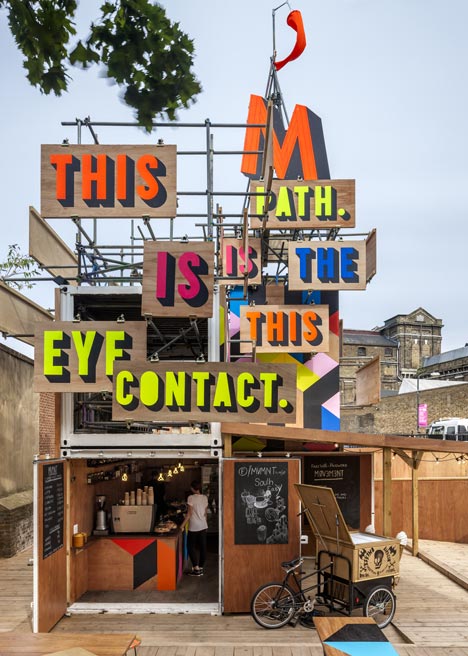
The structure of the building is made from plywood, scaffolding and shipping containers. "I have used containers before for projects," she said, "but this time it was important to me that the containers were used only as a base and not as the main feature." She also explained how her studio will re-use most of the materials when the building is deconstructed in a few months time.
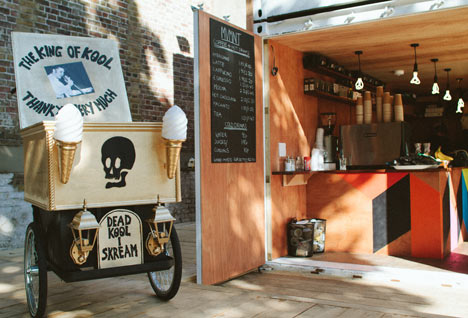
Myerscough collaborated with artist Luke Morgan to design the colourfully painted furniture, which includes stools and tables made from reclaimed wood.
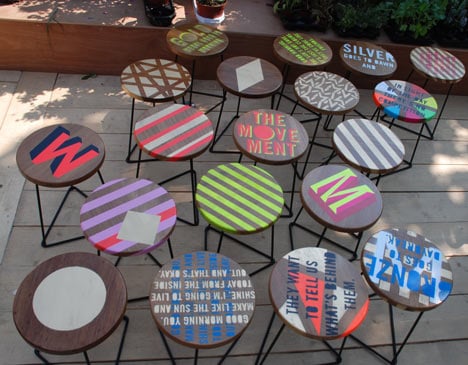
Amphitheatre-style wooden steps climb up around the edge of the cafe's outdoor seating area and are covered with cushions made from kite fabric.
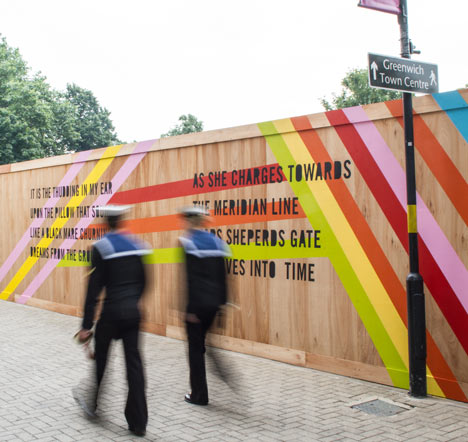
Morag Myerscough previously created another cafe in south-east London, inside a 1960s commuter train carriage in Deptford.
See more stories about cafes on Dezeen »
Here's a longer description from the organisers:
New Temporary Café in Greenwich is a Triumph of Design and Speed
The Movement Café is a new temporary café and performance space next to the DLR station in Greenwich, South East London, designed by British designer and artist Morag Myerscough. It sits in a corner of the site of the former Greenwich Industrial Estate that is currently being regenerated by developers, Cathedral Group.
Built from scratch in just sixteen days to coincide with the opening of The Olympics (the developers thought it important that the gateway to the Olympic borough was not an unattractive construction site), The Movement Café is an explosion of colour and type and sits at the centre of an amphitheatre-like space created from the natural level of the site, post-demolition, being 2m below street level. It’s the result of a public art collaboration between Myerscough and Olympic Poet and prolific tweeter Lemn Sissay. Sissay has been commissioned by Cathedral to write a poem about Greenwich, which will eventually be set permanently into the road that cuts through the site when it is completed. In the short term, the poem, Shipping Good, is painted on the hoarding that wraps the site.
Myerscough’s design for The Movement Café was inspired by one of Sissay’s tweets:
This is the House.
This is the Path.
This is the Gate.
This is the Opening.
This is the Morning.
This is a Person Passing. This is Eye Contact.
Lemn Sissay, June 27th 2012
The designer has used words and phrases from this tweet and painted them by hand on large wooden panels, positioned over the core structure of the building which is covered in an original hand-painted Myerscough multi-coloured geometric pattern. Sissay’s tweets will be written daily on a blackboard in the cafe.
The outdoor amphitheatre seating area provides a lovely, contemplative, sheltered place of respite for commuters and visitors to Greenwich and several times a week plays host to storytelling, poetry reading and acoustic performances. All furniture is made by Morag Myerscough and Luke Morgan from reclaimed laboratory tops. Cushions are hand sewn from kite fabric.
The cafe’s prominent position at the gateway to one of the most important sites during the Olympic games, presented a unique opportunity to showcase the best of British design talent and creative collaboration.